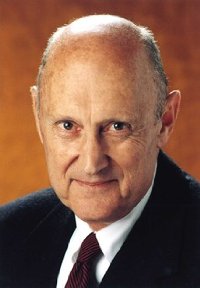There is good and bad news in the most recent Fidelity study on average 401(k) balances.
The good news is that 401(k) balances grew by almost 12% in 2012, making the average 401(k) account $77,300, up from $69,100 in 2011. According to Fidelity, the nation’s largest 401(k) administrator, average 401(k) balances rose sharply due to stock market gains since the market bottomed in early 2009. At that time, the average balance was $46,200.
The other main factor contributing to 401(k) account gains were higher contribution levels. Fidelity estimated that about one-third of the gains were due to worker contributions and employer matches, while two-thirds of the 2012 increases were attributed to investment returns.
Based on Fidelity’s analysis of the 12 million accounts it administers, over the past decade, those two components have played a roughly equal role in boosting account balances, with 53% attributed to contributions and 47% to market gains.
Here’s the Bad News
But like most 401(k) and other investment studies, this Fidelity report neglects to even mention 401(k) fund expenses and fees. This is no trivial matter since the U.S. Department of Labor (DOL) mandated in April 2012 that 401(k) plans must start releasing the very critical costs plan participants pay for being part of their employer’s plan.
As noted in my book, “How 401(k) Fees Destroy Wealth,” fees and expenses are critical in 401(k) plans because they directly reduce all participants’ net returns. Fees and expenses are so important that the DOL has identified 17 distinct fees which can be charged to shareholders in any mutual fund, including those inside 401(k) plans.The other largely unknown fact contained in the Fidelity report is that larger 401(k) plan participant account balances also generate more fees for plan administrators and mutual fund companies.
While some costs are well-known (administrative fees, for example), there are also hidden costs, such as trading expenses, which add up to 50% to shareholders’ costs. Finance professor Burton Malkiel  (left) estimates that over time, fees of just 3% can devour up to 50% of an investor’s investment returns. This is true for accounts inside of 401(k) plans, as well as non-employer fund accounts.
(left) estimates that over time, fees of just 3% can devour up to 50% of an investor’s investment returns. This is true for accounts inside of 401(k) plans, as well as non-employer fund accounts.
Why Are More Diligent 401(k) Plan Participants Paying More?
Then, there is the issue of fairness in 401(k) plan expenses. The new DOL regulations call for plan sponsors to disclose their administrative expenses so they can be compared to other plans of similar sizes. This will reveal which plans are better managed than others. It will also address some sensitive questions about how fees are charged based on individual participant’s plan assets. As it is today, 401(k) plan participants who diligently contributed to their plans over their working lives are paying more for the same plan administration than people who have smaller plan balances.
“Plan sponsors are openly asking whether a participant with a $400,000 401(k) balance should pay ten times more in administrative fees than another participant with a $40,000 balance in the same plan,” according to Bill McClain of Mercer. “This does not make sense since it costs the same to administer both accounts, regardless of their account balances.”
Why No Mention of Fees?
So while the Fidelity study contains some distinctly positive news, it neglects to mention the critical issue of fees and expenses, which significantly reduce net investor returns. More importantly, as the Fidelity study shows, two-thirds of gains in 401(k) accounts were due to market returns. Stock market returns are unpredictable, volatile, and totally outside the control of any investor or portfolio manager.
Yet even the most unsophisticated investor can has total control over their fund expenses and fees. All an investor has to do is choose a cheaper fund, and given the unpredictability of future returns over time, they have a good chance of exceeding their benchmark.
401(k) participants should also take advantage of the DOL’s new 401(k) fee and expense disclosure regulations. These historic disclosures will allow plan participants to see the fees which determine their net 401(k) returns. It will show which funds are better administered than others, and how these fees and expenses have eroded their net returns.
In any case, fees and expenses must become an essential element in all discussions about 401(k) balances and returns. It’s unethical to neglect them, especially since they directly decrease the bottom lines of all 401(k) plan accounts.










